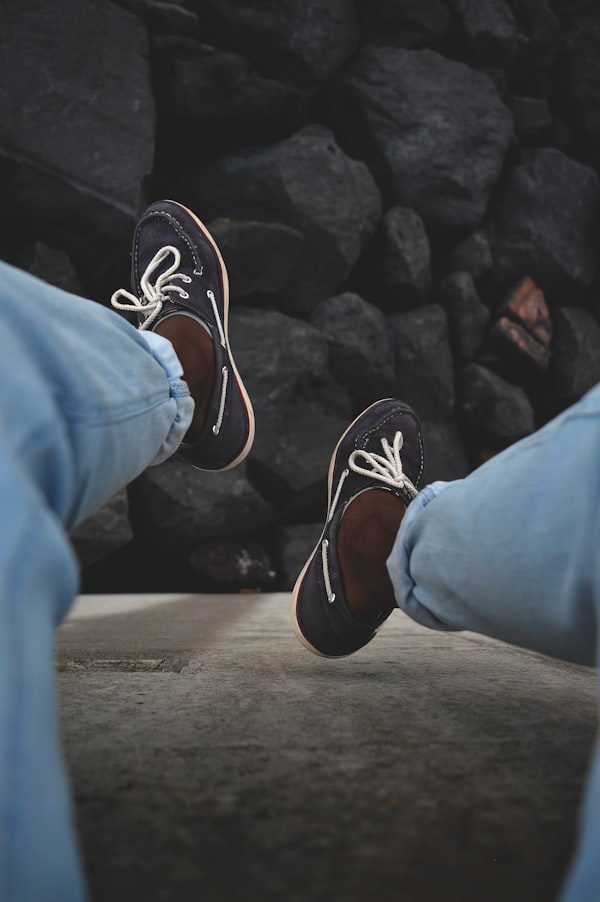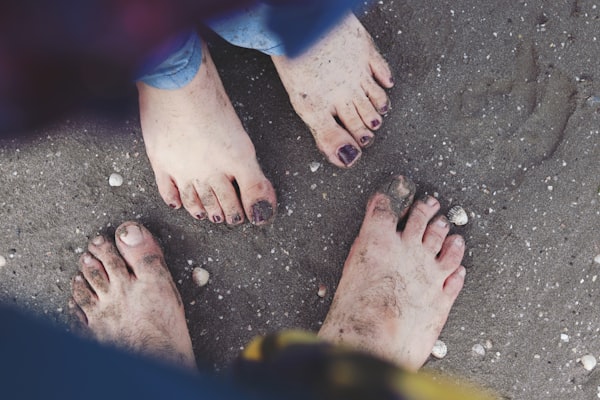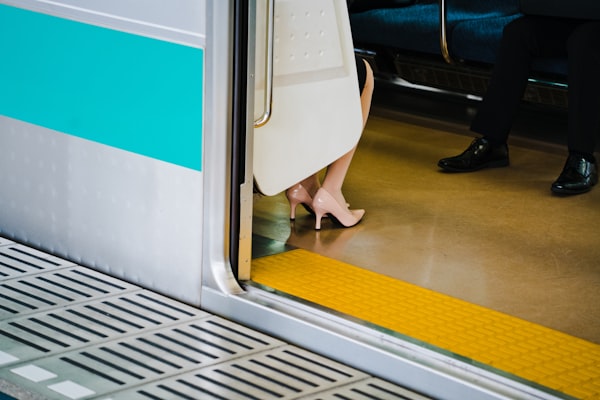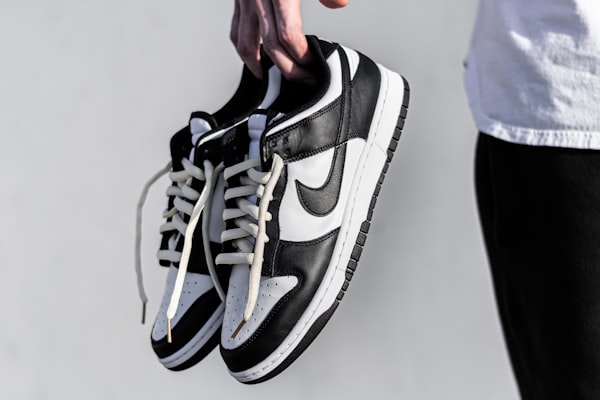Are you tired of wearing cracked leather shoes that make you feel like you're walking on a bed of nails? Well, put down the plasters because we have good news for you!
Today, we will discuss the common causes of cracked leather shoes and how to fix them to save your soles (literally and figuratively). From preventing damage in the first place to restoring your favorite pair of shoes to their former glory, we've got you covered.
By the end, you'll be itching to get your hands on a leather repair kit and some sandpaper to start fixing all of your old shoes. You'll learn the importance of proper leather care and maintenance and discover how to prevent future damage. You'll also feel relieved knowing your feet will no longer be in pain due to uncomfortable, cracked shoes.
So, what are you waiting for? Grab a cup of coffee, sit back, and get ready to learn how to save your soles by fixing your cracked leather shoes!
What Causes Leather Shoes to Crack?
Leather shoes are a classic footwear choice that can be fashionable and functional. Still, they can be prone to cracking over time. Cracked leather shoes can not only look unsightly, but they can also become uncomfortable to wear and may even cause damage to your feet.
Therefore, it's essential to understand what causes leather shoes to crack so that you can prevent the issue from occurring or address it if it does happen.
1. Dryness
One of the most common causes of cracked leather shoes is dryness. Leather is a natural material that requires moisture to remain supple and flexible. When the leather dries out, it becomes stiff and brittle, making it more susceptible to cracking. Various factors, including exposure to heat, direct sunlight, and low humidity levels, can cause dryness. Using harsh cleaning products on leather shoes can also strip away natural oils that keep the leather soft and supple.
2. Water
Exposure to water can also cause leather shoes to crack. While leather is naturally water-resistant, prolonged exposure to water can cause it to become saturated and lose its structural integrity. When the leather dries out after being wet, it can become stiff and brittle, leading to cracking. Additionally, water can cause the leather to shrink or warp, leading to cracking.
3. Heat
Heat is another common cause of cracked leather shoes. High temperatures can cause the leather to dry out and become brittle, similar to the effects of dryness. Additionally, heat can cause the leather to warp or shrink, which can also contribute to cracking. Heat sources like radiators, heaters, and even the sun can all cause damage to leather shoes exposed for too long.
Dryness, exposure to water, and heat are some of the most common causes of cracked leather shoes. Understanding how each of these factors affects the leather can help you take steps to prevent damage and keep your leather shoes in good condition for longer.
How Do I Fix Cracked Leather on Shoes?
If you've got some cracks in your leather shoes, don't despair! With the right tools and effort, you can fix them and give them a new lease on life. Here are the steps to follow to fix cracked leather shoes:
Step 1: Gather Your Supplies
*As an Amazon Associate, I earn a small commission from qualifying purchases at no cost to you.
Before you start repairing the cracks in your leather shoes, gather the following cleaning supplies:
- Soft-Bristled Brush or Damp Cloth: You'll need a soft brush or a damp cloth to remove dust and debris from the shoes during the cleaning process.
- Fine-Grit Sandpaper: To sand the cracks and create a smooth surface, you'll need fine-grit sandpaper. This will help remove rough edges and prepare the leather for repair.
- Clean Cloth or Sponge: You'll need a clean cloth or sponge to apply the leather dye during the final steps of the repair process. Make sure it's suitable for applying dye evenly.
- Non-Porous Sheet: It's a good idea to protect the surface you're working on with a non-porous sheet to prevent any mess.
- Leather Repair Kit: A leather repair kit is essential for fixing cracked leather shoes. Look for a high-quality kit designed for your shoes' type of leather. The kit should include a leather repair compound and any necessary tools for applying it.
- Leather Dye: Choose a high-quality leather dye that matches the color of your shoes. Ensure that the dye is suitable for use on the type of leather your shoes are made of.
- Leather Conditioner: To keep the leather soft and supple, apply a leather conditioner after completing the repair. This will help protect the leather and maintain its appearance.

With these supplies at hand, you'll be ready to clean and repair your leather shoes effectively.
Step 2: Clean the Shoes
Cleaning your leather shoes before repairing the cracks is an essential step to ensure the repair will succeed. Dirt and debris can cause the repair compound to fail to adhere properly and create a less-than-desirable finish. Therefore, cleaning the shoes thoroughly before starting the repair process is essential. Check out our step-by-step guide to cleaning used shoes for all the details.

Step 3: Sand the Cracks
When repairing cracked leather shoes, sanding the area around the cracks is crucial. Sanding the area serves two purposes. First, it removes any rough edges around the cracks that could cause the repair compound to fail to stick. Second, it makes the surface smoother and more even, which allows for a more seamless repair.
To sand the area, you'll need fine-grit sandpaper. Gently rub the sandpaper back and forth over the area around the cracks, using light pressure. Don't press too hard or sand too aggressively; this can damage the leather or create deeper scratches.
As you sand, pay close attention to the edges of the cracks. Make sure to sand these areas carefully to remove any roughness or flaking, as these can prevent the repair compound from adhering properly. Also, evenly sand the area around the cracks to create a smooth and even surface.
Once you've finished sanding, use a soft brush or a damp cloth to remove dust or debris. The area should now be smooth and even, ready for the next step in the repair process. Sanding the area may seem like a small detail, but it can make a big difference in the final result of the repair.
Step 4: Apply a Leather Repair Compound
A leather repair kit can be valuable for fixing cracked leather shoes. It typically contains everything you need to repair the cracks, including a leather repair compound and tools for applying it.
- Choose a high-quality leather repair kit designed for your shoes' type of leather. Make sure the kit includes a leather repair compound and any necessary tools.
- Follow the instructions on the kit to mix the repair compound. Some kits will require you to combine two or more components to create the compound. Follow the instructions carefully to ensure you mix the compound correctly.
- Apply the compound to the cracks using the tools included in the kit. Depending on the kit, you may be able to apply the mixture with a brush, a spatula, or a syringe. Make sure to spread the compound evenly over the cracks and work it into the leather.
- Let the compound dry completely according to the kit instructions. Depending on the product you're using, this may take several hours or even overnight.
Step 5: Sand the Repair
After the leather repair compound has thoroughly dried, the next step is to smooth the surface of the repair and blend it in with the surrounding leather. This step is crucial for achieving a seamless and natural-looking restoration.
- Use fine-grit sandpaper to smooth the surface of the repair. Sand the area lightly and evenly to create a smooth and even surface. Be careful not to sand too aggressively or to remove too much of the repair compound, as this can create an uneven surface and compromise the integrity of the repair.
- Pay close attention to the edges of the repair, and blend them in with the surrounding leather. You can use your fingertips to gently rub the edges of the repair and smooth out any rough areas.
- Wipe away any dust or debris from the surface of the repair with a clean cloth after sanding.
Step 6: Apply Leather Dye and Conditioner
After you have sanded the surface of the repair, the next step is to apply a leather dye that matches the color of your shoes. This will help blend the repair with the surrounding leather, giving it a seamless and natural look.
- Choose a high-quality leather dye that matches the color of your shoes. Make sure the dye is suitable for use on the type of leather your shoes are made.
- Apply a small amount of the dye to a clean cloth or sponge, and then use it to apply the dye to the repaired area. Be sure to apply the dye evenly, using a circular motion to blend it with the surrounding leather.
- Let the dye dry completely, following the instructions on your product. This may take a few hours or more.
- Apply a leather conditioner to the shoes to keep the leather soft and supple. This will help to protect the leather and keep it looking its best.
Take your time and be patient. Achieving a seamless and natural-looking repair may take some practice.
How Do I Repair It to Look Seamless?
A seamless repair is key to achieving a professional-looking result. Here are some tips to help the repair look as natural and unnoticeable as possible:
- Choose a leather repair kit that matches the color of your shoes as closely as possible. This will help the repair to blend in with the surrounding leather and create a more natural appearance.
- Apply the repair compound in thin layers to avoid creating bulges or uneven surfaces. Use a small amount of compound at a time and smooth it out as evenly as possible. You may need to apply several thin layers to build the repair and achieve a smooth surface.
- Sand the repair thoroughly to make it blend in with the surrounding leather. Use fine-grit sandpaper and sand gently in a circular motion. Be sure to sand the edges of the repair to blend them in with the surrounding leather. Keep sanding until the repair is smooth and level with the rest of the shoe.
- Apply the leather dye in thin coats and let each coat dry completely before applying the next one. This will help build up the color gradually and avoid creating noticeable color differences between the repair and the rest of the shoe.
- Finish with a leather conditioner to keep the leather soft and flexible. This will help to protect the leather and prolong the life of the repair. Apply the conditioner according to the product instructions, covering the entire shoe, including the repaired area.
Don't be afraid to practice on a small, inconspicuous area of the shoe before tackling a more extensive repair. With patience and attention to detail, you can be proud to step out in your newly restored shoes!
How Do I Prevent Shoes from Cracking?
Preventing cracks in leather shoes is much easier than fixing them. Here are some tips to help you keep your shoes in good condition and prevent cracks:
- Use a leather conditioner to moisturize the leather and keep it soft and flexible. A good leather conditioner can help prevent cracks by keeping the leather supple. Be sure to follow the instructions on the conditioner and apply it regularly.
- Avoid exposure to extreme temperatures, as high heat can cause the leather to dry out and crack. Therefore, keeping your shoes away from radiators, heaters, and direct sunlight is essential. Additionally, storing your shoes in a cool and dry place can help prevent damage from extreme temperatures.
- Keep leather shoes dry because water can cause the leather to shrink, warp, and become brittle, leading to cracks. If your shoes get wet, let them dry naturally and avoid exposing them to heat sources.
- Don't use harsh cleaning products, as these can strip away natural oils and cause the leather to dry and crack. Instead, use a mild soap and water solution to clean your shoes and avoid getting them too wet.
- Store leather shoes properly in a well-ventilated area, away from moisture, and direct sunlight can help prevent damage from humidity and high temperatures. Be sure to stuff your shoes with newspaper or shoe trees to help them retain their shape.
Following these prevention tips can help keep your leather shoes in good condition and avoid the frustration of dealing with cracks.
How Do I Store Leather Shoes when Not in Use?
Properly storing your leather shoes is as important as maintaining and repairing them. Here are some tips to keep your shoes in good condition when not in use:
- Ensure your shoes are clean and dry before storing them. This will prevent any mold or mildew from forming and damaging the leather. Use a soft cloth to remove dirt or dust, and allow the shoes to air dry completely before storing them.
- Use shoe trees to help your leather shoes keep their shape while in storage. They can also help to absorb any moisture that may accumulate in the shoes. Choose a shoe tree that fits snugly in your shoe, and insert them immediately after removing them.
- Store in a cool, dry place to prevent any damage from heat, humidity, or sunlight. Avoid storing your shoes in a damp basement or hot attic. Instead, opt for a closet or storage area that is clean and dry.
- Avoid plastic bags as they trap moisture and lead to mold or mildew growth. Instead, use a breathable shoe bag or wrap your shoes in a clean cotton cloth.
- Rotate your shoes by not wearing the same pair of leather shoes daily. Instead, rotate your shoes to have time to rest and recover between wears. This will help to prevent excessive wear and tear and prolong the life of your shoes.


Remember to take the time to properly clean and care for your shoes, and invest in the right tools and products to help maintain them. Then, you can enjoy your favorite leather shoes for many seasons with little effort and attention.
On a Final Note
Congratulations, dear sole mates! You've reached the end and are now fully equipped to tackle the challenge of cracked leather shoes.
You can prevent and fix cracks like a pro with your newfound knowledge and tools.
So, go forth confidently and put your best foot forward in those newly restored shoes!
Related Articles












